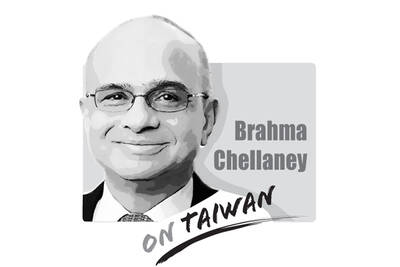After 1949, the Chinese Nationalist Party (KMT) and the Mainlanders who emigrated from China to Taiwan ruled over the Taiwanese majority. The party maintained power by uniting Mainlanders and isolating them from the Taiwanese who already lived here, separating them into an official class.
This segregation policy adopted by the KMT aimed to divide the Taiwanese people based on a good-bad dichotomy: Those who opposed the KMT were labeled villains, Taiwanese independence activists or even followers of the Chinese Communist Party (CCP), while those who chose to cooperate with the KMT were treated as their servants.
The most important tools for implementing this segregation policy were the educational system and the media, which were used to teach the Taiwanese obedience and smear the images of those who opposed the KMT.
With the passage of time, and as a result of social changes, the Mainlanders living in Taiwan have become divided into two groups, "Taiwanese Main-landers" who identify with Taiwan, and "Chinese living in Taiwan" who do not identify with Taiwan. The longstanding policy to create an official class of Mainlanders produced a cultural and political phenomenon unique to the group of Chinese living in Taiwan.
Many people from this group believe they are the natural ruling class of Taiwan. They feel that they are wiser than the Taiwanese people, are an enlightened official class and are the teachers that should reform the Taiwanese people, who naturally should be obedient to their rule.
When former president Chiang Ching-kuo (蔣經國) passed away, this group of Chinese living in Taiwan lost their ruling position, but having internalized the culture of the official class, they felt a sense of crisis and were unable to adapt to the changes brought by democracy. Unable to maintain face and keep up the false dignity of the official class, they turned to organized cultural villainy.
Through their own privileged media outlets, they have resorted to reporting using double standards, insults and prejudice. While they only spent a few days reporting on the source of Ma's fortune, worth NT$80 million (US$2.45 million), they are offering around-the-clock coverage of the scandal surrounding President Chen Shui-bian's (
When Ma goes jogging every morning he becomes an advocate for exercise for everyman, while Chen's inspection tours of southern Taiwan are construed as dereliction of duty.
Examples of how Taiwanese are insulted and discriminated against in the media abound. This is not enough, however, and they have announced that they will join hands with their old enemy the CCP to speed up the exodus of Taiwanese capital to China and hollow out Taiwan. They are even promoting Taiwanese agricultural exports to China to erode the DPP's stronghold in southern Taiwan.
Their goal is to help China annex Taiwan, whether they are in power or not. To them, Taiwan's democracy is but a symbol of their shameful loss of power. They cannot understand what democracy means to the Chinese people who live under the rule of the CCP. The official class cannot bear that its servants have stood up and wrested power from them. This also explains why pro-China media outlets led by the group of Chinese living in Taiwan are acting with the deadly frenzy of a pack of crazed dogs.
Chang Cheng-shuh is a former deputy secretary-general of the Taiwan Association of University Professors.
Translated by Daniel Cheng

Donald Trump’s return to the White House has offered Taiwan a paradoxical mix of reassurance and risk. Trump’s visceral hostility toward China could reinforce deterrence in the Taiwan Strait. Yet his disdain for alliances and penchant for transactional bargaining threaten to erode what Taiwan needs most: a reliable US commitment. Taiwan’s security depends less on US power than on US reliability, but Trump is undermining the latter. Deterrence without credibility is a hollow shield. Trump’s China policy in his second term has oscillated wildly between confrontation and conciliation. One day, he threatens Beijing with “massive” tariffs and calls China America’s “greatest geopolitical
US President Donald Trump’s seemingly throwaway “Taiwan is Taiwan” statement has been appearing in headlines all over the media. Although it appears to have been made in passing, the comment nevertheless reveals something about Trump’s views and his understanding of Taiwan’s situation. In line with the Taiwan Relations Act, the US and Taiwan enjoy unofficial, but close economic, cultural and national defense ties. They lack official diplomatic relations, but maintain a partnership based on shared democratic values and strategic alignment. Excluding China, Taiwan maintains a level of diplomatic relations, official or otherwise, with many nations worldwide. It can be said that
Chinese Nationalist Party (KMT) Chairwoman Cheng Li-wun (鄭麗文) made the astonishing assertion during an interview with Germany’s Deutsche Welle, published on Friday last week, that Russian President Vladimir Putin is not a dictator. She also essentially absolved Putin of blame for initiating the war in Ukraine. Commentators have since listed the reasons that Cheng’s assertion was not only absurd, but bordered on dangerous. Her claim is certainly absurd to the extent that there is no need to discuss the substance of it: It would be far more useful to assess what drove her to make the point and stick so
The central bank has launched a redesign of the New Taiwan dollar banknotes, prompting questions from Chinese Nationalist Party (KMT) legislators — “Are we not promoting digital payments? Why spend NT$5 billion on a redesign?” Many assume that cash will disappear in the digital age, but they forget that it represents the ultimate trust in the system. Banknotes do not become obsolete, they do not crash, they cannot be frozen and they leave no record of transactions. They remain the cleanest means of exchange in a free society. In a fully digitized world, every purchase, donation and action leaves behind data.